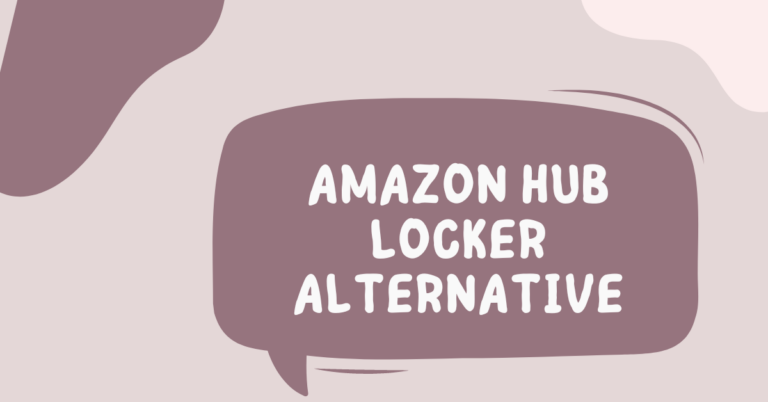The Beginner’s Guide to Publishing and Selling Low Content Books on Amazon
Amazon’s Low content books are with minimal text, like journals, planners, or coloring books. They mainly contain lines, spaces, or simple illustrations instead of detailed content.
Is selling these books profitable? Yes, it can be. These books are easy to create and have low production costs. You don’t need to be a writer or an artist to start, which makes it an accessible business for many people.
If you’re interested in a creative way to earn money without a lot of upfront investment, selling low content books on Amazon might be a good path for you. Simple to make and easy to sell, these books can become a steady source of income.
What is Low Content Books on Amazon
Low content books on Amazon are types of books that don’t need much text or complicated writing. Examples include notebooks, diaries, planners, coloring books, and puzzle books like sudoku or crosswords. These books mainly have simple, repetitive content like lines for writing or drawings for coloring.
These books are popular because they serve specific needs. For example, a planner helps people organize their days, a coloring book offers relaxation, and a puzzle book provides fun challenges. People buy these books for everyday use or as gifts.
How To Sell Low Content Books on Amazon [Step By Step Guide]
1. Pick a Topic
First, decide what type of low-content book you’d like to create. Popular choices include journals, planners, sketchbooks, and coloring books.
These books don’t require much-written content but focus more on layout and design, appealing to interests like self-help, productivity, or hobbies.
For example, if you are passionate about fitness, a workout journal or meal planner could be perfect. Identify a niche that interests you and has a demand in the market. This will make your book more appealing to potential buyers.
2. Design Your Book
Now it’s time to bring your low-content book to life with an attractive design. Use design tools like Canva, Adobe InDesign, or Microsoft Publisher. These platforms offer user-friendly interfaces and plenty of design elements that can help you create professional-looking pages.
Your focus should be on creating a clean and engaging layout that resonates with your audience. For instance, if your book is a planner, consider adding elements that make planning easier, like calendars and checklist boxes. Keep the design simple; avoid clutter that might make the book hard to use.
Once you have designed the interior, shift your focus to the cover, as it’s the first thing potential buyers will see. Your cover should capture the essence of what’s inside while also being eye-catching enough to stand out.
3. Get Your Book Ready for Printing
Before you upload your book to Amazon, you need to ensure it meets their print specifications. This includes checking the trim size (the book’s dimensions), bleed (extra area to avoid border issues), and ensuring the file format is correct. Amazon prefers PDFs for printing purposes as they maintain layout integrity.
Convert your finished design into a PDF format, making sure that all the elements are correctly aligned and that no content is cut off during the printing process. This might require some adjustments and fine-tuning to get everything just right.
4. Sign Up for Amazon KDP
Amazon Kindle Direct Publishing (KDP) is the platform where you’ll publish your book. If you’re not already registered, you need to create an account. This process is straightforward—just follow the instructions on the KDP website to get set up.
Once your account is active, familiarize yourself with the KDP dashboard. It’s user-friendly and provides all the tools you need to publish your books. Amazon also offers comprehensive guides and resources to help new publishers understand all the functionalities.
5. Upload Your Book
After logging into your KDP account, start the process of uploading your book. This involves uploading the PDF files of your book’s interior and cover. KDP will guide you through the steps to upload these elements and fill in additional information such as the book title, author name, keywords, and a compelling description.
Ensure all the information is accurate and well-presented. Keywords and descriptions are crucial as they directly influence how your book is discovered by potential buyers. Spend some time crafting a compelling description that highlights the benefits of your book and what makes it unique.
6. Price Your Book
Choosing the right price for your book involves several factors. Use Amazon’s royalty calculators to understand how different price points affect your earnings. Consider the cost of production, the pricing of similar books, and your target profit margin.
It’s wise to research the market to see what other similar books are selling for. This gives you a competitive edge by allowing you to position your book attractively in terms of pricing. Remember, pricing can always be adjusted later based on the book’s performance and market changes.
7. Decide on Publishing Rights
When publishing with Amazon KDP, you have the option to enroll your book in Kindle Unlimited, Amazon’s subscription service where members
can read as many books as they like for a monthly fee. This can be a great way to reach a broader audience since subscribers are more likely to take a chance on new authors without additional cost.
If you choose Kindle Unlimited, you’ll be paid based on the number of pages read, which might result in different earnings compared to outright sales. Alternatively, you can opt for standard distribution, where customers buy your book at the set price.
8. Order a Proof Copy (Optional)
Before your book goes live on Amazon, you have the option to order a proof copy. This is a physical copy of your book sent to you for review. Checking a proof is crucial as it allows you to verify that everything prints correctly and meets your expectations.
Look through the proof copy for any final adjustments that might be needed, such as aligning elements that are off or correcting colors that didn’t print as expected. This step can prevent customer complaints and returns.
Although this step adds time to the publishing process, ensuring your product’s quality before it goes to market can help build a good reputation and reduce the likelihood of negative feedback.
9. Publish Your Book
Once everything is set and you’re satisfied with your proof copy, go ahead and publish your book. Click the “Publish” button on KDP, and your book will appear on Amazon within 24-48 hours. You’ll receive a confirmation email from Amazon once your book is live.
This moment is a culmination of all your hard work. Seeing your book listed on Amazon is incredibly rewarding, but the work doesn’t stop here. Now it’s time to focus on getting people to notice and buy your book.
After publishing, monitor the book’s performance. Amazon provides detailed reports that can help you understand sales patterns, customer behavior, and potential areas for promotion or improvement.
10. Market Your Book
Marketing is essential to ensure your book reaches its potential audience. Start by creating an author page on Amazon. This can serve as a central hub where readers can find all your books and learn more about you. Use relevant keywords in your book’s title and description to make it easier for potential readers to find your book through searches.
Consider setting up social media profiles dedicated to your writing or book topics. Platforms like Facebook, Instagram, and Twitter can be excellent tools for connecting with readers, sharing content related to your book, and driving traffic to your Amazon page.
FAQ
What are low content books?
Low content books include journals, planners, coloring books, and notebooks that focus more on design and usability than on written content.
How do I start selling low content books on Amazon?
Create a Kindle Direct Publishing (KDP) account, upload your book designs, set prices, and add descriptions to attract buyers.
What should I consider when designing a low content book?
Focus on your target audience and ensure the design is visually appealing and functional. The cover design is especially important in attracting buyers.
How do I price my low content books effectively?
Consider production costs, market competition, and desired profit margins. Use Amazon’s royalty calculator to see how different prices affect earnings.
What are effective marketing strategies for low content books on Amazon?
Optimize book listings with relevant keywords, use Amazon advertising tools, create an engaging author page, and promote your books on social media. Consider collaborations with influencers to expand your reach.
![Why Does My Amazon Listing Say Currently Unavailable? [Reason+Fixes]](https://simpleshophacks.com/wp-content/uploads/2024/01/Why-Does-My-Amazon-Listing-Say-Currently-Unavailable--768x402.png)
![How To Get Ungated on Amazon for Free [Step By Step Guide]](https://simpleshophacks.com/wp-content/uploads/2024/04/How-To-Get-Ungated-on-Amazon-for-Free-768x402.png)

![How Do I Open a Second Shop on Etsy? [Expert Guide]](https://simpleshophacks.com/wp-content/uploads/2024/05/How-Do-I-Open-a-Second-Shop-on-Etsy-768x402.png)


Is there any chance to get a better comission on the KDP royalties or is it limited to 70%?
thank you
Nope, it’s limited to a 70%, afaik
Hello. I heard Amazon is limiting the AI books on Kindle Direct Publishing, do you have any info on that?
Yes, Calvin, it’s limited to 3 books a day https://www.theguardian.com/books/2023/sep/20/amazon-restricts-authors-from-self-publishing-more-than-three-books-a-day-after-ai-concerns